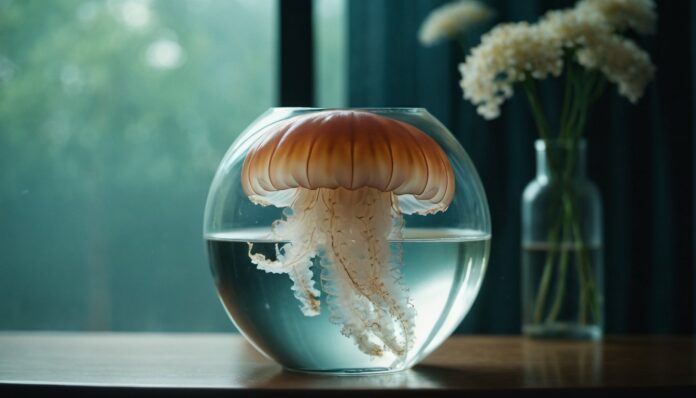Jellyfish are fascinating marine creatures belonging to the phylum Cnidaria. They are not fish but are often mistaken for them due to their gelatinous, bell-shaped bodies and tentacles. Jellyfish are known for their unique anatomy, which includes a simple nervous system and specialized stinging cells called nematocysts located on their tentacles.
Why are they called Jellyfish?
Jellyfish are called so because of their gelatinous, jelly-like appearance and texture. Their bodies are soft and translucent, resembling a floating blob of jelly or gel. The term “jellyfish” originates from their physical resemblance to jelly, even though they are not actually fish.
The largest species of jellyfish known is the Lion’s Mane jellyfish (Cyanea capillata). It can have a bell diameter of up to 2 meters (over 6.5 feet) and its tentacles can extend for several meters, making it one of the longest animals in the world. This species is found in cold waters of the Arctic, northern Atlantic, and northern Pacific Oceans.
Some of the most dangerous jellyfish known for their potent stings and potential harm to humans include:
- Box Jellyfish (Chironex fleckeri): Found primarily in the waters of Northern Australia and Southeast Asia, the Box Jellyfish is considered one of the most venomous marine creatures. Its tentacles contain toxins that can cause severe pain, skin necrosis, and even death due to cardiac arrest.
- Portuguese Man o’ War (Physalia physalis): Although not a true jellyfish but a siphonophore, the Portuguese Man o’ War is infamous for its painful sting. Found in warm ocean waters, its tentacles can deliver venom that causes intense pain, welts, and in rare cases, systemic symptoms that require medical attention.
- Irukandji Jellyfish (Carukia barnesi): Despite being one of the smallest jellyfish species, the Irukandji Jellyfish is incredibly dangerous due to its venom. Found mainly in Australian waters, its sting can cause Irukandji syndrome, characterized by severe pain, nausea, sweating, and potentially life-threatening complications such as heart failure.
Interesting facts about Jellyfish:
- Diverse Species: There are over 2,000 known species of jellyfish found in oceans worldwide, ranging from the tiny Irukandji jellyfish to the large Lion’s Mane jellyfish.
- Ancient Creatures: Jellyfish are among the oldest known multi-organ animals, with fossils dating back to over 500 million years ago, even before dinosaurs roamed the Earth.
- Unique Anatomy: They are not fish but belong to a group called “Cnidarians.” Their bodies are composed of a gelatinous substance, with a bell-shaped body and tentacles that contain venomous stingers called nematocysts.
- Venom and Stings: While many jellyfish stings are harmless to humans, some species like the Box Jellyfish have venom that can be deadly. Their stings can cause pain, skin irritation, and in extreme cases, cardiac arrest.
- Bioluminescence: Some jellyfish are bioluminescent, meaning they can produce light through chemical reactions within their bodies. This ability helps them attract prey and may also serve as a defense mechanism against predators.
